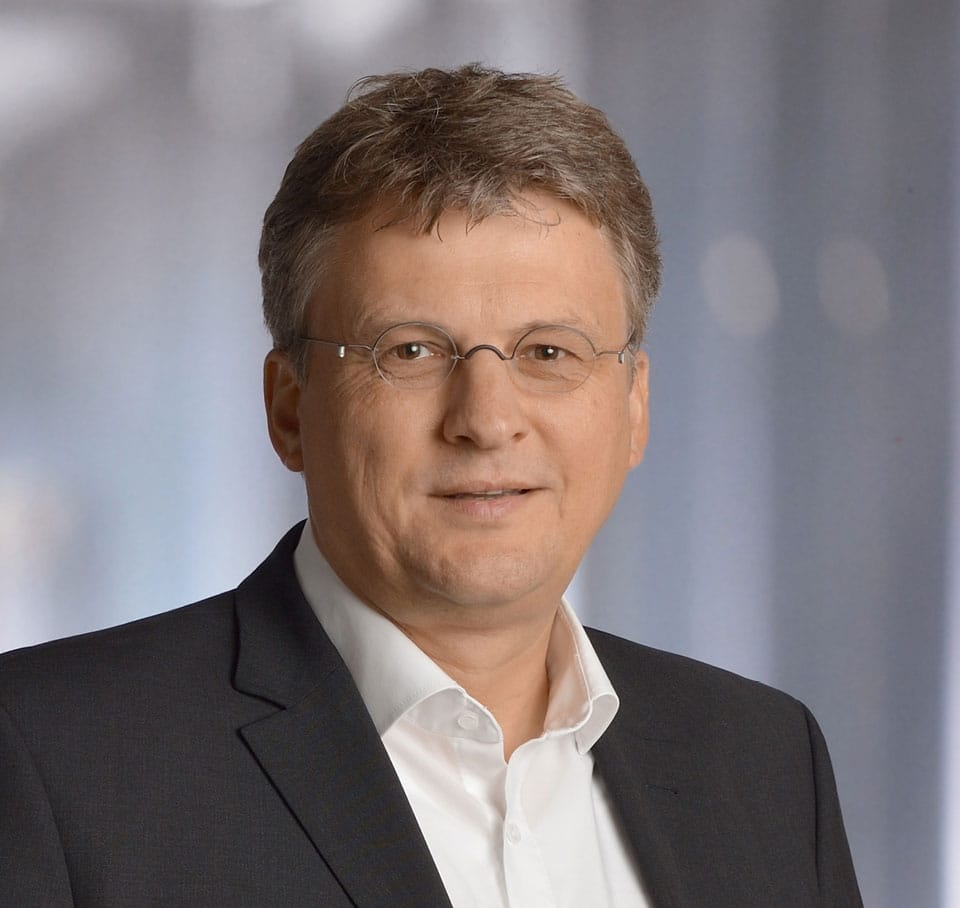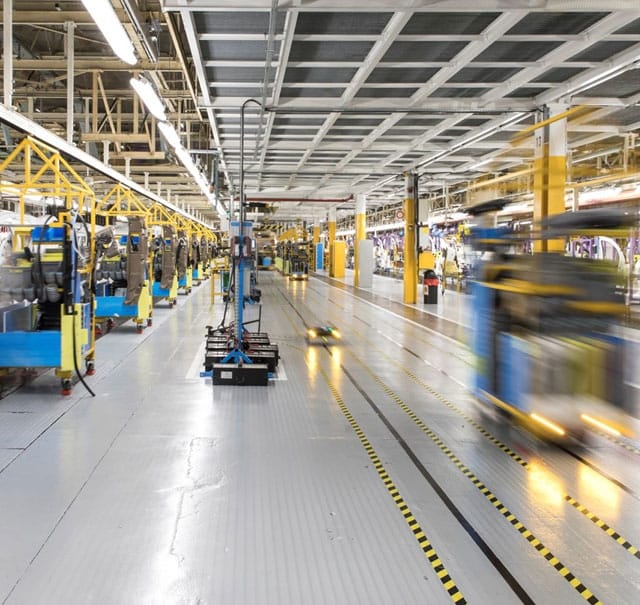OPC UA – Bridging the Gap from the Sensor to the Cloud and Back

What's new at the OPC Foundation?
For the OPC Foundation, it will be a challenge to channel the worldwide OPC UA movement and to structurally coordinate all activities in line with companies and associations. According to Stefan Hoppe, pure data protocols will play a secondary role in the future.
INTERVIEW WITH STEFAN HOPPE
1. Mr. Hoppe, why is active participation in working groups and dialog among OPC Foundation members key to the efficient and further development of the Companion Specifications as the basis for digital transformation?
Hardly anyone would have expected only a few years ago that three of the largest cloud providers -– Google Cloud, Microsoft Azure and Amazon Web Services (AWS) – or even globally leading semiconductor manufacturers such as Intel, NXP, Qualcomm and Microchip, would be cooperating with almost all leading companies in the automation industry as solution providers under the umbrella of the OPC Foundation. Not to mention end users such as BMW, Foxconn, L’Oreal, Miele, Samsung and Volkswagen.
They are all united in the common goal of working within a global alliance on the future of secure and industrial interoperability. OPC UA not only provides the secure transmission of data across all levels from sensors to the cloud – the members and partner organizations also standardize the data to be transmitted and its meaning in companion specifications – this is the essential key for digitalization. Altogether, this distinguishes the OPC Foundation as the world's largest ecosystem for secure, industrial interoperability.
2. Currently, the OPC UA FX (Field eXchange) Specification Extension is being worked on globally. Is this "more" than just another working group under the umbrella of the OPC Foundation?
In 2018, the Field-Level Initiative (FLC) was launched: 27 leading automation companies and technology providers lead the group. A total of over 300 experts from 60 OPC member companies are working in various groups to extend OPC UA to meet all field-level requirements, including real-time, safety, and motion. This also involves harmonizing the requirements from the process and factory industries. In the process industry, we firmly believe in the relevance of Ethernet APL, which scales from the edge to the field level and is thus the ideal precursor for OPC UA to grow into the field devices in the process industry.
So, we are working on "an OPC UA based field solution for (almost) everything". There has never been a comparable initiative of such intensity before. The first goal of this OPC UA extension is the realization of a standardized horizontal controller-to-controller communication – followed by the extension of controller-to-device and also between individual devices. At the end of this year, there will be a public demo at the SPS fair.
3. Why do industrial networks need real-time capability, for example, via 5G?
Standard IT networks are not designed to ensure that data must be provided at specific points in time. But this exact requirement exists in the field of industrial real-time automation. While OPC UA guarantees interoperability, today it relies on other technologies to provide deterministic transmission of data. However, this Quality- of-Service (QoS) possibility is provided by the TSN and also the 5G infrastructure as a subordinate transport layer.
The combination OPC UA "over TSN" or "over 5G" enables data to be transmitted with the lowest possible latencies within a guaranteed period of time. As an example, mobile robots require a reliable combination of wireless and wired deterministic communication.
The OPC Foundation is cooperating with the 5G-ACIA initiative to address all these requirements of real-time data communication with a guaranteed QoS, even over successive, different transport paths via cable or WLAN with integrated end-to-end security. As a result, OPC UA grows with TSN and 5G into new application areas.
4. What else is the OPC Foundation currently working on?
The work is diverse and is by no means limited to the extension of OPC UA in the field level. In addition to many detailed extensions, these 3 major focal points should be mentioned:
- The vertical scaling of OPC UA to the cloud (and back),
- The connections to digital twins, management shells, and cloud-to-cloud systems, and
- The continuation of the harmonization of a huge number of companion specifications.
On the topic of cloud, today, too few people realize that OPC UA is much more than the last mile to devices: In addition to transport via TCP or UDP, it also scales to the cloud (and back) via "UA over MQTT", offering OPC UA REST API interfaces as well. The aspect "to the cloud and back" is now specifically addressed in an OPC UA IoT Starter Kit based on a Raspberry PI platform and will be presented for the first time on June 9 at the "OPC Day International".
In addition to the simplicity of OPC UA on a PI, it also shows the importance of standardized data – much more than "just quickly transferring a process value in its own data format". It is also about built-in heartbeat functionality (dead man), automatic buffering of data in case of interruption of transmission, and more.
The topic of "standardized information" is also an essential aspect for the topics of digital twins and management shells – pure chaos would ensue if everyone comes up with their own arbitrary data structures – so the secure transmission of standardized and harmonized information is the key to digitization. With about 25 partners, we are working in more than 60 groups (35 of them alone are from our key partner VDMA) on the creation of so-called companion specifications.
The harmonization of overlapping data structures is important and is showing success: "UA for Machinery" is a basic standard – virtually the nameplate of the machines – on which many other standards are based and which will be found on every machine.
5. How can someone who is looking for a solution but is not (yet) an OPC UA expert best visualize the application potential?
The analogy to the Lego building block fits perfectly: OPC UA is a collection of technological functionalities – there are building blocks for recognizing devices, for reading out services and data, and for modeling data and interfaces.
For transmission, there are various "protocol building blocks" such as TCP, UDP, MQTT or APL, TSN, 5G, Wifi6 and, of course, a whole bunch of security building blocks. We users are offered this creative pile of building blocks in ready-made "experience kits" – for the farm, the ship, the castle – if you buy it, it always works – nothing is missing. And in the applies in the technical world – there are Companion Specifications with the appropriate set of OPC UA based building blocks which describe the robot or an RFID reader – all are necessary for interaction.
There is also the big Lego baseplate that is always the foundation of everything – and the mandatory base set of Lego bricks, so that everyone can experience the interoperability promise. Other building blocks are optional, these building blocks increase the degree of flexibility in the applications. The farm still has cows, but they are not included in the package for the "ship". Fortunately, the OPC Foundation makes sure that the sailors from the ship are the same size as the farmers – they might want to stop there for a snack and must fit at the table.
With other partners, like the VDMA, we are in the process of creating over 60 Companion Packages – and more and more organizations want to do the same – we are constantly starting new joint working groups – currently with Spectaris for the laboratory analysis devices. It should be understood by now that OPC UA is much more than a protocol – it is a framework for interoperability.
One abstraction level higher, we have four convincing offers which are unique in the world:
- OPC UA as a secure, open, IEC-based framework with built-in security and the ability to model and transport data securely.
- What we believe to be the largest interoperability ecosystem in the world.
- The integration of enabling technologies such as 5G, IEEE’s TSN, or Ethernet APL and SPE.
- The largest collection (over 60 as of today) of OPC UA based information models.
Altogether, these four parts form the solutions that the OPC Foundation offers to the factory automation industry, the process automation industry, and other industrial sectors. OPC UA, together with the OPC UA FX Spec extensions, therefore, guarantee a harmonized solution, which scales vertically to the cloud – entirely unique to the world!






